|
Talking
Turkey

Merriam’s
(Meleagris gallapavo merriami).
Saw
an article in the local paper about "Talk like
a Turkey", how appropriate this close to the
spring hunting seasons to write about our American
Bird. This has to be one of most durable birds in
North America still surviving after centuries of
pressure from not only hunting but farming,
population growth and lost natural habitat.
|

Eastern
|
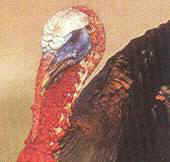
Rio
Grande
|
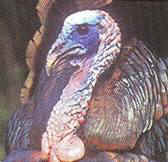
O
sceola
|
Before
European colonization of North America there were no
turkeys outside the Western Hemisphere. There are
only two species of turkeys in the world, and
several sub-species off of them several centuries
later - originally there was our familiar wild
turkey in the United States and Mexico, and the
smaller ocellated turkeys in subtropical lowlands of
Mexico, Belize and Guatemala.
When the Spanish colonized Mexico, they discovered
the wild turkeys kept as domestic animals by the
Indians of Mexico. Archaeological evidence found in
Anasazi ruins in the Four Corners region told of
people of the Southwest having domesticated turkeys
at least 1,300 years ago. The Spanish were intrigued
by these big meaty poultry birds and shipped them to
their homeland in early 1500's, along with other
Native American foods that have become world dietary
staples, such as tomatoes, chilies and onions.
|
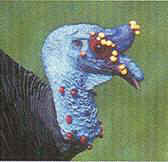
Ocellated
|
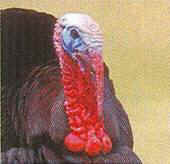
Merriam’s
|
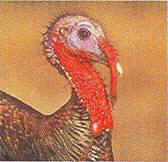
Gould’s
|
The
Spaniards soon found the habits of the big bird were
predictable and their liking for and being
nut-eaters, making trapping them in the oak brush of
the Southwest easy. Although being wary and
secretive, their roosting habits made capturing them
easy for these early explorers.
Today
we enjoy larger flocks and more variety than our
forefather’s ever dreamed of. Look at how this
bird has survived over the centuries; just think
Thomas Jefferson and other early fathers had a
choice between this bird and the American Eagle for
the National bird. We almost lost the national bird
while the turkey thrived in all the varied climates
and weather conditions.
___________________________________________________________
Eastern
(Meleagris gallapavo silvestris)
This
bird ranges the eastern half of the United States,
enjoying areas of hardwood and mixed forests. Their
average height of a gobbler is 4’, with body
weights of 20-25 lbs.
Rio
Grande (Meleagris gallapavo intermedia)
This
bird ranges the central plains of the United States,
enjoying areas of brushy and arid countryside’s
near water sources. Their average height of a
gobbler is 4’, with body weights of 17-20 lbs.
Osceola
(Meleagris gallapavo osceala)
This
bird ranges the Florida peninsula, enjoying areas of
oaks and palmetto hammocks, swamps and flat pine
wood forests. Their average height of a gobbler is
3’-4’, with body weights of 12-15 lbs.
Ocellated
(Meleagris ocellata)
This
bird ranges the Yucatan Peninsula, enjoying mature
growth rain forests. Their average height of a
gobbler is 3’-4’, with body weights of 11-13
lbs.
Merriam’s
(Meleagris gallapavo merriami)
This
bird ranges western mountains of the United States,
enjoying mountainous ponderosa pine forest regions.
Their average height of a gobbler is 3’-4’, with
body weights of 16-20 lbs.
Gould’s
(Meleagris gallapavo mexicana)
This
bird ranges northern Mexico into small areas of the
United States in Arizona and New Mexico, enjoying
mountainous regions. Their average height of a
gobbler is 3’-4’, with body weights of 20-22
lbs.
_________________________________________
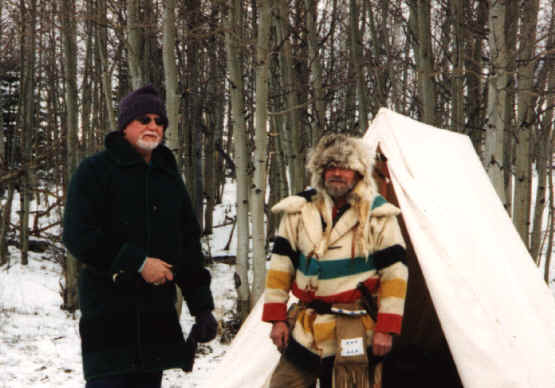
Buck
Conner & Kermit Trustem
Encampment
- Storm Mountain CO 2006
Some
of our hunting camps during the fall turkey season
in Colorado can be a surprise with unexpected snow.
Then the hunting camp turns into an encampment,
forget turkey hunting for most part, scout for deer
and elk.
_________________________________________
Good
luck, take care.

Aux
Aliments de Pays!
__________________________________________
|